TypeScript / How the compiler compiles
This article is inspired by the talk How the TypeScript compiler compiles◹, you should really check it out for a more in-depth understanding about the TypeScript’s compiling process.
At a high level, the TypeScript compiler is a tool to help us analyze and compile the TypeScript code into JavaScript (*.js), as well as some type definition files (*.d.ts) or source maps (*.js.map).
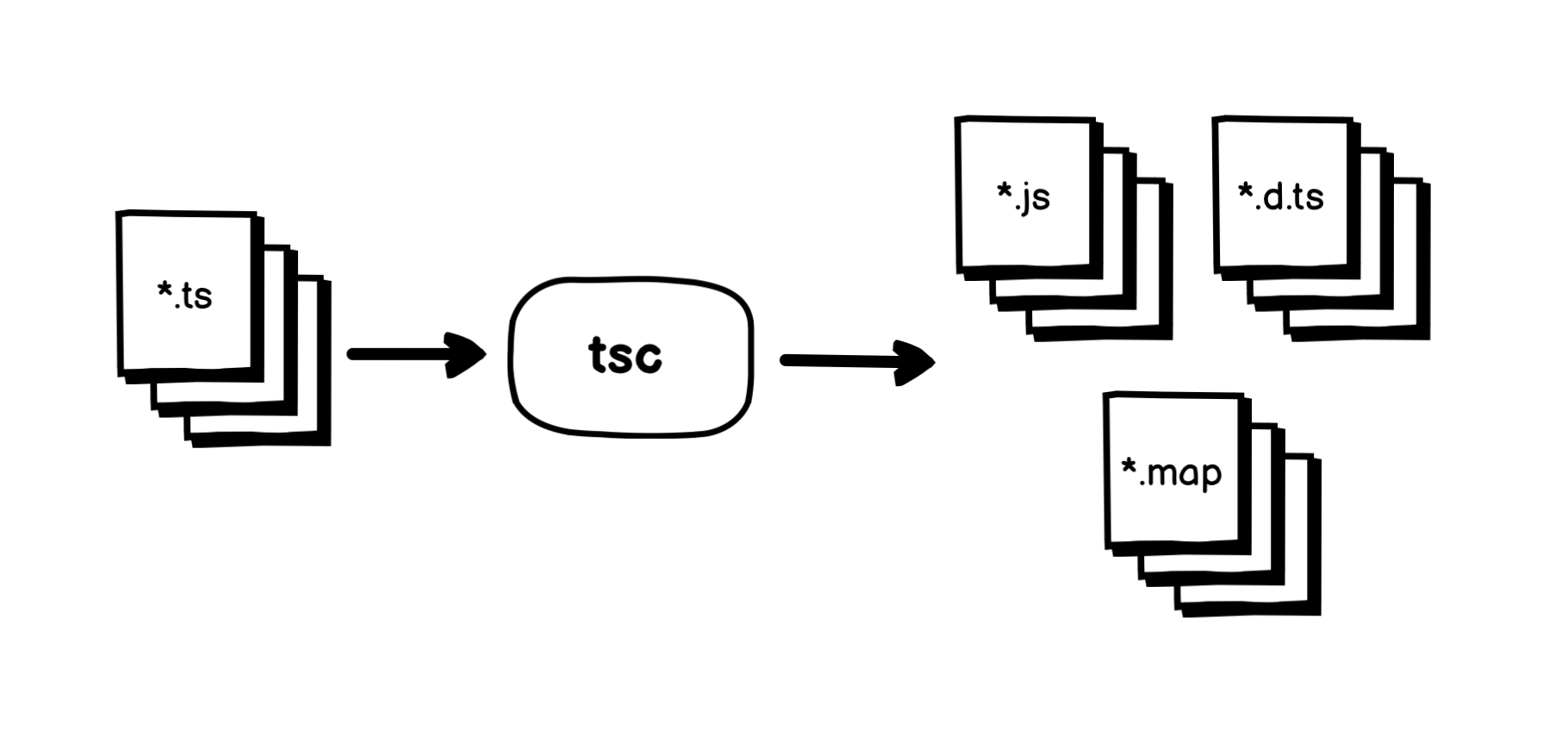
If the source file contains some problems, the TypeScript compiler is also able to provide the diagnostics, so we know what went wrong and how to fix it.
The compilation process
Internally, it’s a complex process that involves many different parts, here’s the summary of the process:
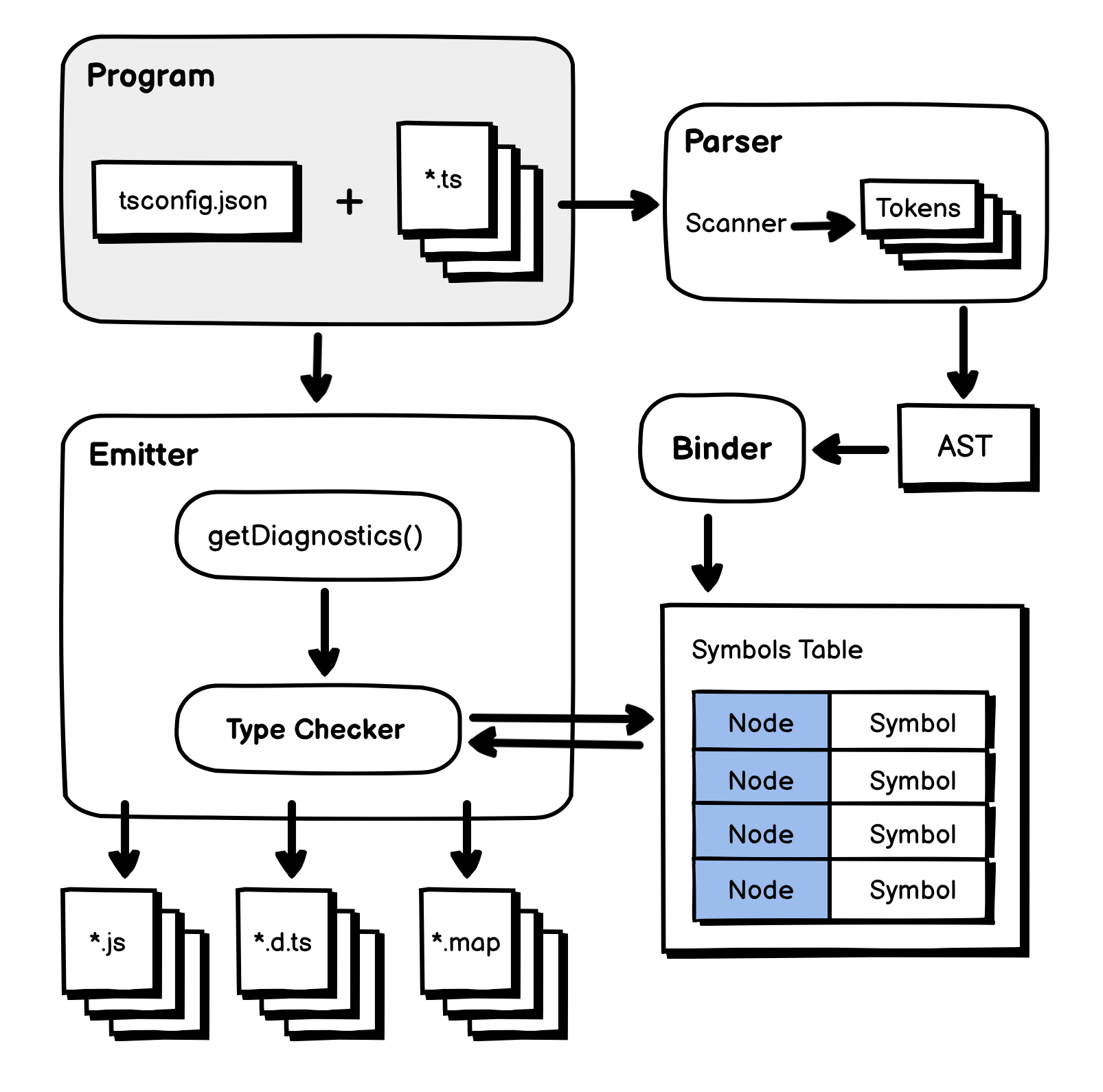
The compilation process starts when you invoke the tsc command. To run, the TypeScript compiler needs a tsconfig.json file, this file essentially defines two parts: the Compiler Options and the Input Files.
{
"files": [
"src/*.ts"
],
"compilerOptions": {
...
}
}
The compilation context will be created as a Program object, defined in the src/compiler/program.ts file. When created, it loads all the input files and their imports. And call the Parser (defined in src/compiler/parser.ts) to parse each file into an AST (Abstract Syntax Tree).
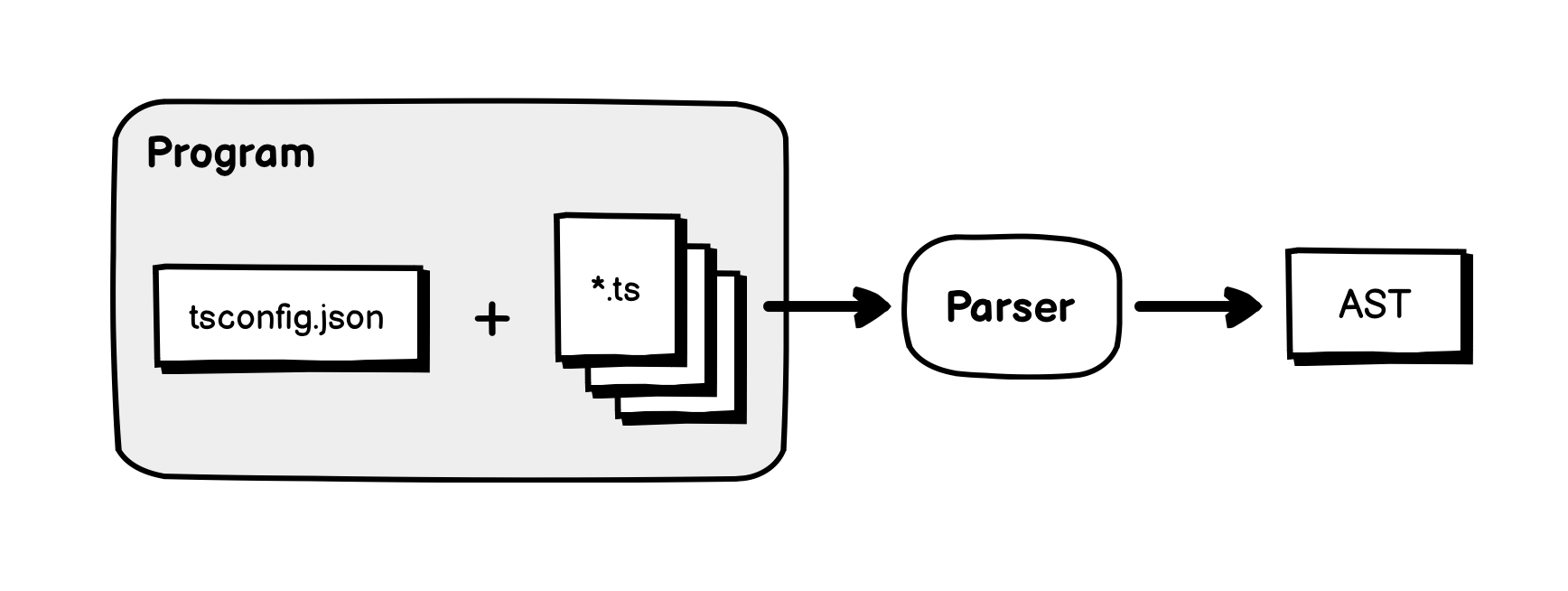
Under the hood, the Parser creates a Scanner instance (defined in src/compiler/scanner.ts), which will scan the source code and generate a stream of SyntaxKind tokens.
The parsing process did not stop here, after this, the AST will be fed to the Binder (defined in src/compiler/binder.ts), to create a map between the AST Nodes and the Symbols.
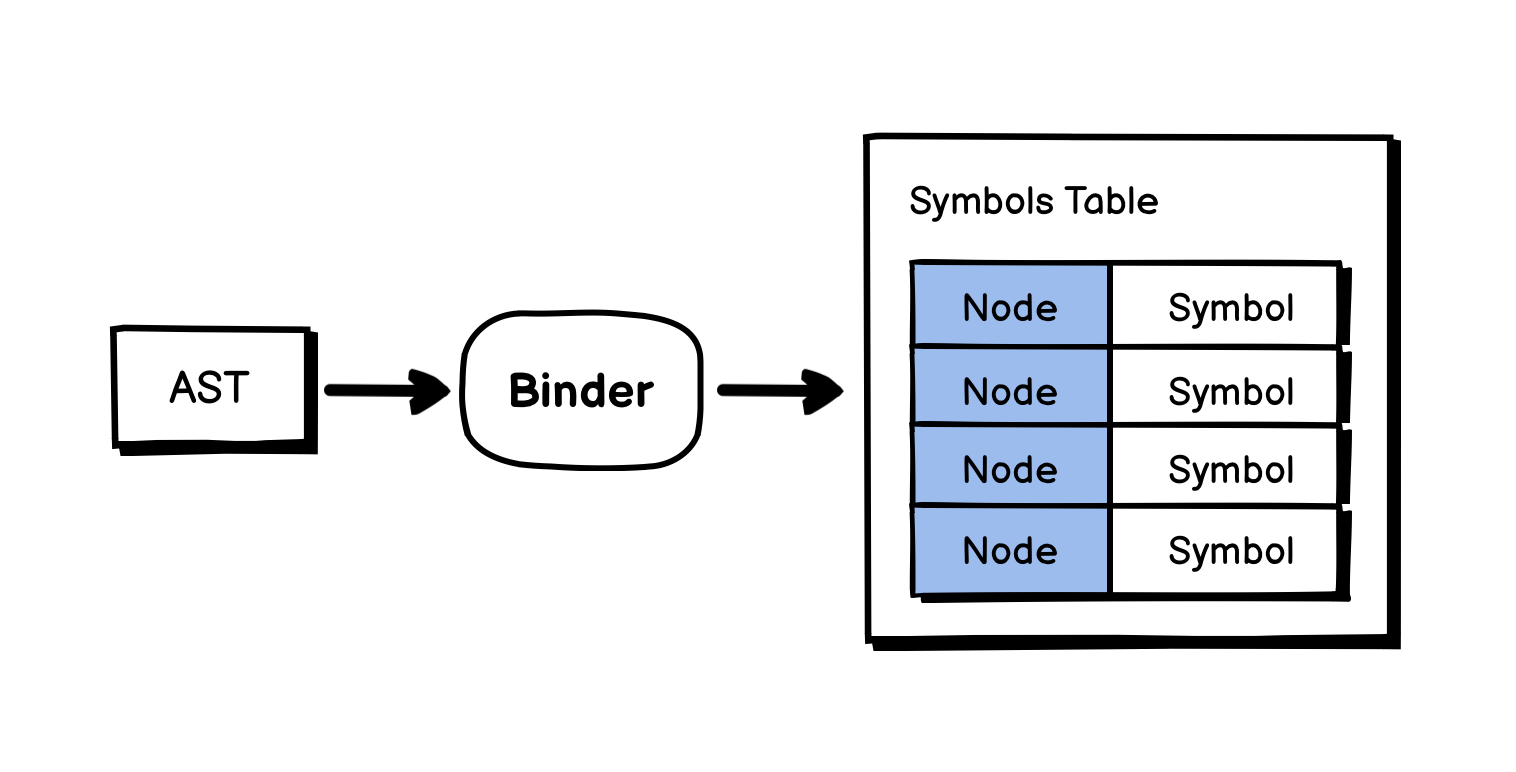
A Symbol is additional metadata to store the type information of each Node. The Binder creates a Symbols Table, which will be used in later phases like type checking.
After this, with the Program.emit call, the Emit Worker will be created to transform the AST into a string of JavaScript source code and other stuff. There are 2 types of Emitter:
- The JavaScript Emitter: defined in src/compiler/emitter.ts, emitting JavaScript source code and Source Maps.
- Type Definition Emitter: defined in src/compiler/definitionEmitter.ts, emitting type definition files.
When the Emitter running, it will call the getDiagnostics() function to create a Type Checker, this object is defined in the src/compiler/checker.ts file. Then the Emitter will walk the AST to process each Node.
On each Node, it will perform code analysis, using the type data from the Symbols Table, and if everything goes well, the final JavaScript sources will be generated.
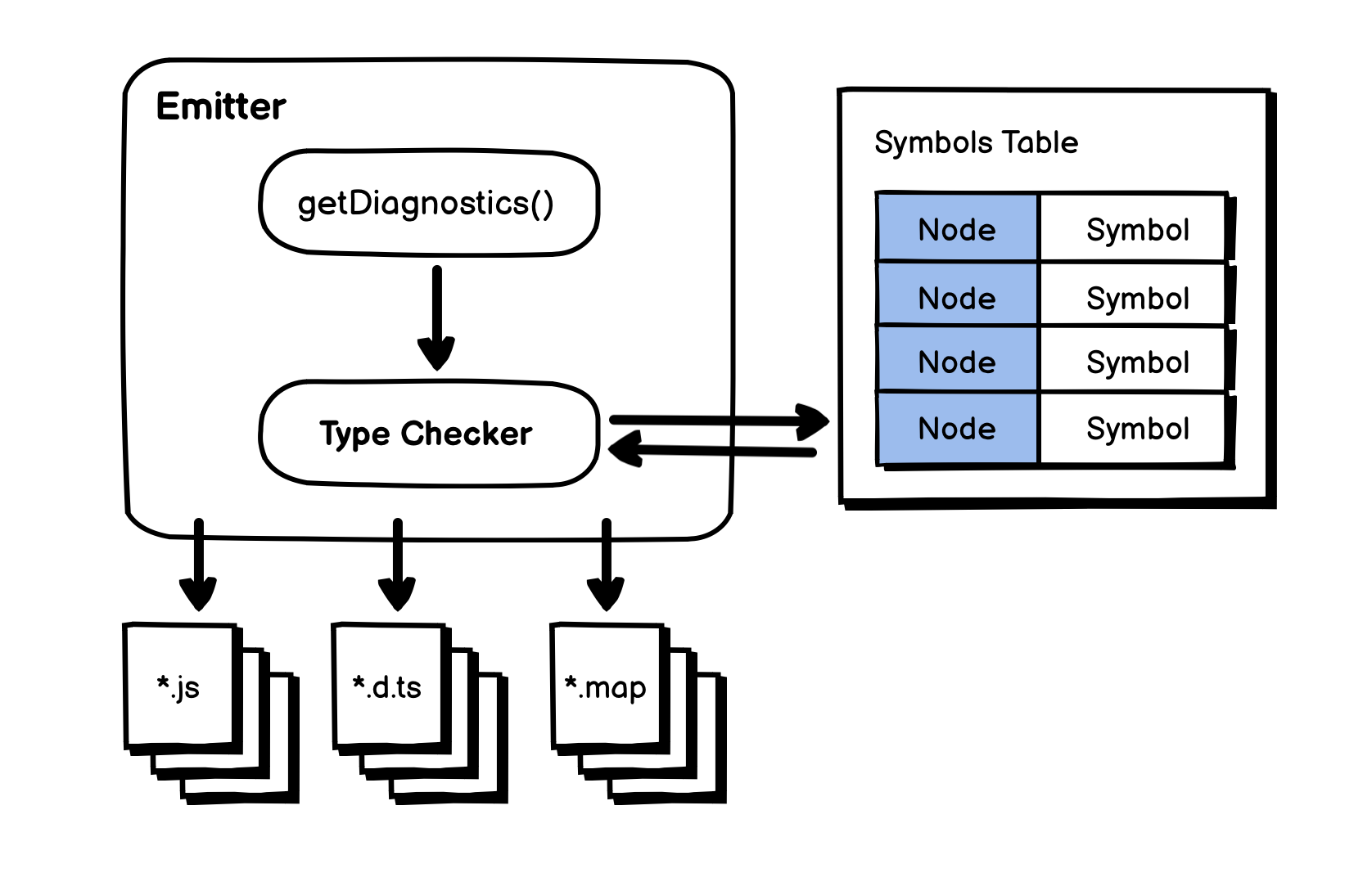
Error reporting
There are different types of errors that could be returned during the compilation process, depending on what phase the compiler found the error.
enum BuildResultFlags {
None = 0,
Success = 1 << 0,
DeclarationOutputUnchanged = 1 << 1,
ConfigFileErrors = 1 << 2,
SyntaxErrors = 1 << 3,
TypeErrors = 1 << 4,
DeclarationEmitErrors = 1 << 5,
EmitErrors = 1 << 6,
AnyErrors = ConfigFileErrors | SyntaxErrors | TypeErrors | DeclarationEmitErrors | EmitErrors
}
For example, if there is an error in tsconfig.json file, the ConfigFileErrors will be returned.
If an error is found by the Scanner, it is the SyntaxErrors. Sometimes, the code is written in the correct syntax, but semantically incorrect, most of the time they are TypeErrors, which can be caught by the Parser or the Type Checker. For example:
let a: number = "hello";
This code is written in the correct syntax, but semantically incorrect because you cannot assign a string value to a number variable.
Conclusion
In this article, I only illustrate the overview and the relation between each part of the compilation process, with this, you are able to explore the TypeScript source code to see how things are actually implemented.
It is recommended to read the TypeScript Compiler Internals◹ document for a more in-depth version of this article (which also dives into which part of the code, and how things are called each other).